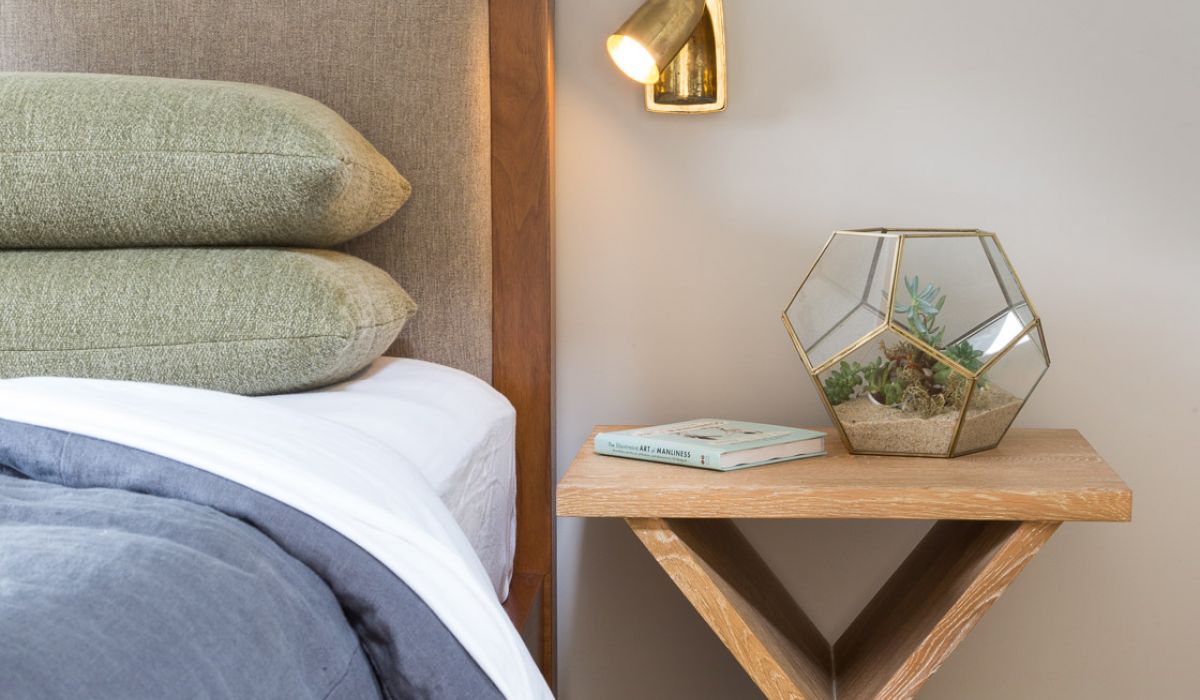Interior Design Lighting Tips and Tricks: Sconce Edition

A few weeks ago, we blogged about a few chandeliers and pendants that are inspiring us right now, and we offered some tips for selecting and hanging the right fixture. This week, we continue to light up the holiday season with our other favorite type of lighting – sconces!
If you find yourself not totally knowing the best ways to include sconces in your space, you are not alone. Sconces can be a direct source of light, or they can add decorative mood lighting to a space. They can be hardwired or plug-in. They work equally well in bathrooms as they do in stairways. They can emit ambient light outwards, or they can shine a cone of light directly up or down. These factors combined with scale, positioning, and style make selecting the right type of sconce no easy feat. Take a look below at how we’ve used sconces in our projects and learn some of our expert tips and tricks.
Bathrooms
When considering sconces for your bathroom vanity, the most important things to keep in mind are mounting height and style of sconce. Ideally, in order to cast the most flattering light on your face when looking in the mirror, sconces should be mounted at eye level on either side of your mirror. The sconce should also emit ambient light outwards, not directional light up or down. However, since not everyone has the same “eye level,” the standard mounting height is 65 – 70 inches from the floor. This measurement is the distance from the floor to where the sconce affixes to the wall (the “backplate” or the “mounting plate”), or to the center of the light source (not to the top or bottom of the overall fixture).


You may find yourself asking, what if I don’t have enough room on either side of my mirror to mount the sconces? If this is the case, which isn’t uncommon, then you can mount your sconces on the adjacent walls, as we did for our clients in the images below. This will give you the same flattering lighting effect on your face and may lend itself to giving you more vertical flexibility, since the sconces will be closer to your face.


Built-ins
Built-ins and reading nooks are creative and useful places to explore placing sconces. When mounting a plug-in sconce in these areas, have someone sit down and measure the height to just above their shoulder. This is where the sconce should be mounted. It’s high enough that it won’t obstruct your line of sight and your body won’t bump into it when you sit down. If having an electrician install a junction box for a hardwired sconce, consider the seat height of the sofa or chair (16-18 inches is standard) and add the distance when seated from the seat to your shoulder (around 20 inches to the center of the sconce).

Bedside
Bedside sconces are a popular and functional location to place sconces. The pros are that you can clear up table space on your nightstand and you can have direct reading light, if needed. The cons are that once you decide where to install the junction boxes, your bed location is pretty much set (unless you are using plug-in sconces). You don’t want the sconce to be so low that it is in your line of vision or obstructs your bedside table. You also don’t want it so high that the light shines in your face or you can’t reach the switch when lying in bed. Because bed heights vary so greatly, the best way to determine the right mounting height is to have someone sit on the mattress and fit a location around their shoulder height (around 20 inches above the mattress, measured to the center of the sconce).

Decorative
Sconces don’t always have to come in pairs! Individually, a sconce can be great statement piece. If layering sconces with other lighting such as table lamps, you can adjust the standard height of 65 – 70 inches to fit the specific needs of your space. In the image below, we mounted a fun sconce above a console mirror and layered with colorful table lamps.

Additionally, if there is a special wall treatment in your space, such as this beautiful wall paneling in our client’s mudroom, you may have to adjust the height.

Looking for lighting design for your home? Learn more about our Online Interior Design Services or Get In Touch with a Coddington Designer.